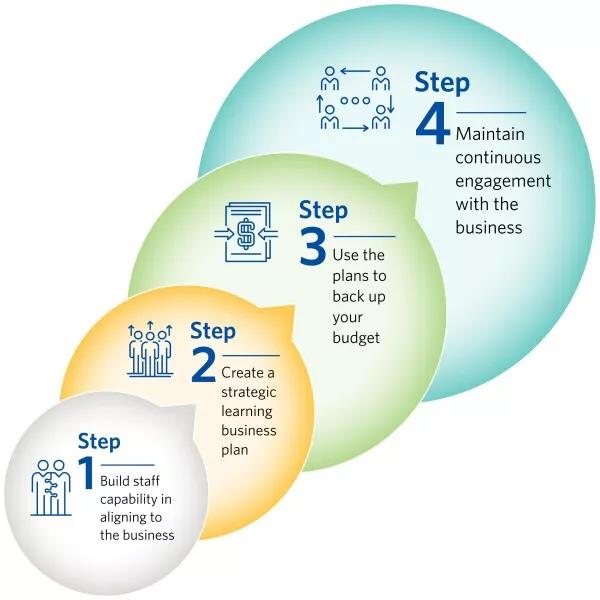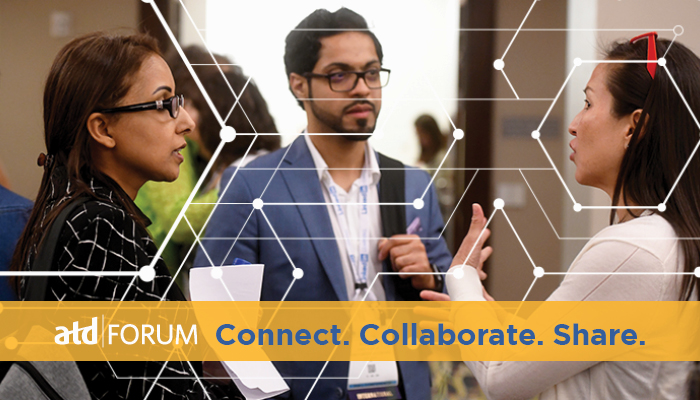What Is a Chief Learning Officer?
A chief learning officer (CLO) oversees organizational learning in a corporation. The role came about in the late 1980s to align corporate learning strategy and people development with business goals. Since then, it has helped to make organizational learning a key player in the success of an organization.
A Chief Learning Officer’s Responsibilities
A chief learning officer does much more than manage training and development. Successful CLOs are experts in enterprise learning, change management, leadership development, performance consulting, data and analytics, financial acumen, and learning technologies. They have strong organizational development and strategic business capabilities. They drive company culture and influence strategic direction through talent development. Today CLOs are transforming learning strategy through more personalized, digitized, and curated learning experiences. They manage learning ecosystems that support current and future workforce skill needs, and they emphasize agility and foresight when designing and executing learning programs. They assess and implement technology solutions that fit their learning needs.
“Business integration is a key priority for all learning organizations. Linking learning strategy to business strategy ensures business impact and longevity of a learning function,” said former KPMG CLO Brad Samargya in the book Forward-Focused Learning. Finally, CLOs are business influencers. They work closely with their C-suite peers to shape employee learning based on business goals, drive organizational change through people, and prioritize employee skills development. Samargya outlines four key actions that CLOs can take to ensure they have a seat at the executive table as a strategic business driver:

What Is the Difference Between a Chief Learning Officer and a Chief Talent Development Officer?
Many organizations use the terms Chief Talent Development Officer (CTDO) and Chief Learning Officer to describe the same role. While the term CLO is more well known, CTDO may be a more accurate descriptor of the multi-functional scope of today’s learning leaders.
According to the ATD Research report, Chief Talent Development Officers: Driving Strategy and Performance, “while it goes by many names—chief talent development officer (CTDO) and chief learning officer (CLO) are among the most popular—the learning leadership role demands strong and varied skills wielded by professionals with the courage and vision to fully own and define what has become a key contributor to organizational success.” This report explains that organizational effectiveness increases the longer the head of learning is in the role and the more directly the role reports to the CEO.
Chief Talent Officer and Chief People Officer are two similar titles used within talent development or human resources. These roles tend to be more focused on talent acquisition, high-performance teams, and people development.

How to Become a Chief Learning Officer
Many learning leaders spend years gaining knowledge about employee training and development theory and practices, with the goal to one day lead the function. While these skills are important, aspiring learning executives should be businesspeople first and learning people second. The average CLO has 10 to 20 years of corporate experience, at a minimum. She understands the organization’s key priorities and can speak the language of the business. She also has developed strong relationships with internal stakeholders and is able to communicate the value and impact of learning strategies. Some roles that report to the CLO include senior vice president of talent development, vice president of talent management, senior director of human resources, director of leadership development, and director of learning. The CLO oversees a diverse mix of departments, and any of these positions can be considered a stepping-stone to the top of the function. Those aiming for the CLO role should focus on organizational systems thinking, strategic planning, and business acumen. Continuing education, such as a certification, master’s degree, or doctoral degree, can help to increase expertise in these areas. Most importantly, successful CLOs are lifelong learners. They are curious, observant, and well-read.
How ATD Can Help
ATD offers a variety of professional development resources for current and future CLOs. We provide insight on trends, hot topics and best practices in talent development. For more information, please visit the following:

Articles
Talent Development Leader publishes new digital content monthly for current and aspiring talent development executives.

NEWSLETTER
TD Leader Newsletter
Get curated content exclusively for TD leaders in your inbox monthly. Sign up today!

MEMBERSHIP
ATD Forum
The ATD Forum is an exclusive organizational membership for senior talent development leaders, managers, and strategists. Members benefit from the ability to benchmark and network with a diverse mix of award-winning organizations. As an added benefit, this group is vendor-, marketing-, and consultant free. All discussions are hosted in a confidential environment.

MEMBERSHIP
CTDO
The CTDO network is an exclusive individual membership for executive-level learning leaders focused on shaping what’s next in talent development.
Free Toolkit: Structuring the Learning Function Using a Federated Model
The purpose of this toolkit is to provide a general overview of how learning functions are structured and the various templates and tools you and your team can use to help you decide what structure is right for your learning function.
